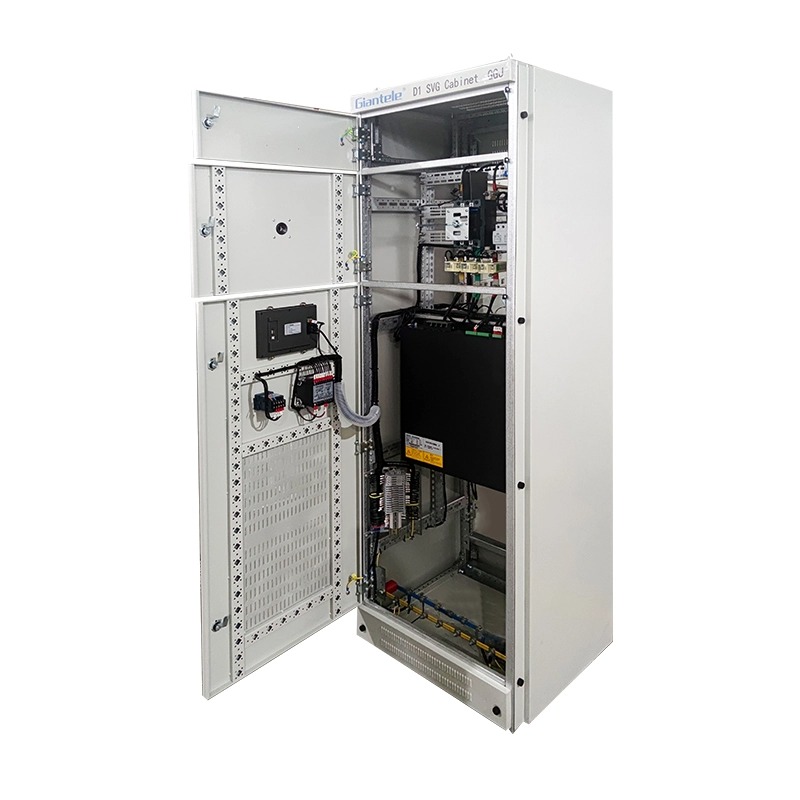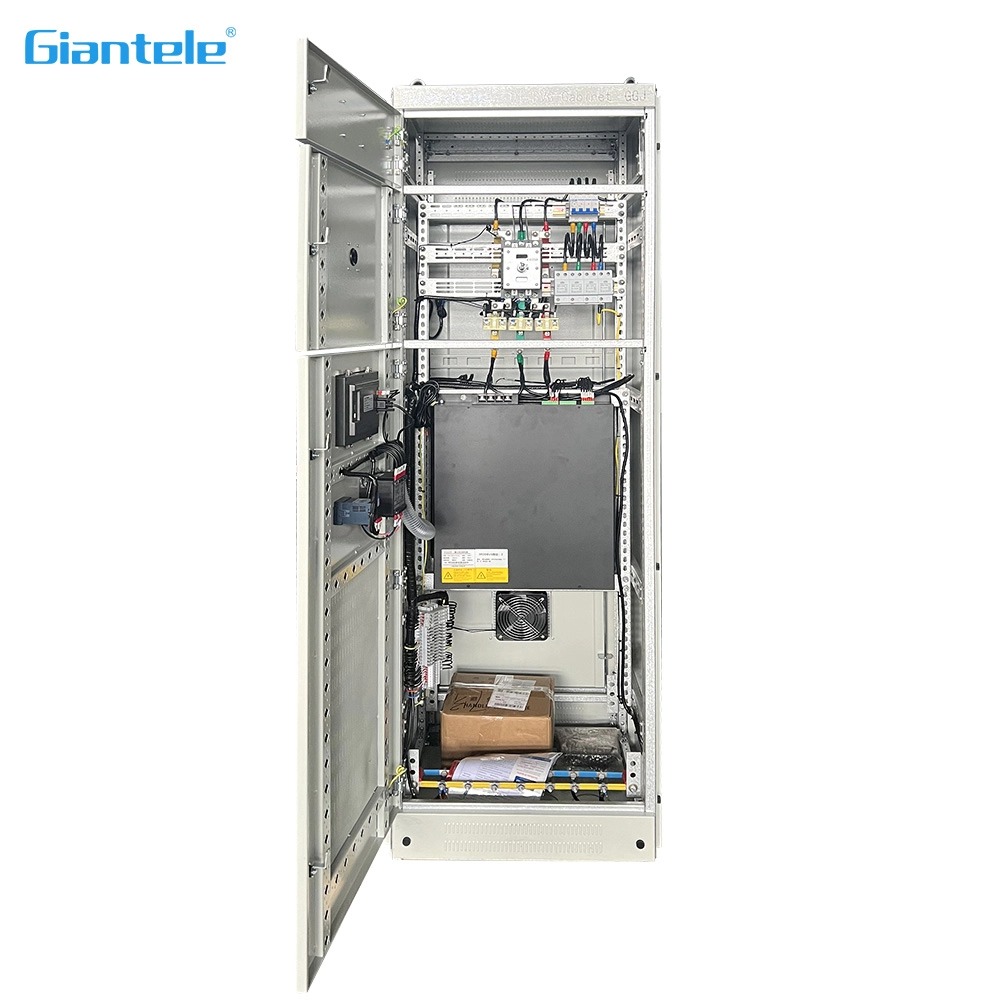








Capacitor banks are vital components in industrial power systems, responsible for improving power factor, reducing reactive power losses, and enhancing energy efficiency. In environments where electrical loads fluctuate and reliability is critical, the health of a capacitor bank directly influences system performance and operating costs. However, without a structured maintenance program, even high-quality capacitor banks can deteriorate rapidly—leading to costly downtime, overheating, or equipment failure.
This guide explores the most effective maintenance best practices for capacitor banks in industrial settings. It focuses on inspection routines, condition monitoring, safety standards, and optimization strategies that keep these systems running efficiently and safely for years.
Before delving into maintenance, it’s essential to understand why capacitor banks are indispensable. A capacitor bank is a group of capacitors connected in parallel or series to provide reactive power compensation. This compensation improves the power factor—the ratio of real power to apparent power—thus minimizing power losses and avoiding penalties from utility providers.
In industrial facilities with heavy machinery, induction motors, and variable frequency drives (VFDs), capacitor banks help stabilize voltage and reduce harmonic distortion. When properly maintained, they reduce stress on transformers and generators, prolong equipment life, and lower electricity costs. Therefore, maintenance is not merely about keeping capacitors functional—it’s about ensuring optimal energy performance across the entire plant.

Regular visual inspection is the cornerstone of capacitor bank maintenance. This step identifies early warning signs of deterioration before they escalate into failures. Technicians should conduct both scheduled inspections (monthly or quarterly) and post-event checks following load changes or faults.
Key inspection areas include:
| Inspection Element | What to Check | Common Warning Signs |
|---|---|---|
| Capacitor Units | Leakage, bulging, discoloration | Oil leaks, swelling, burnt smell |
| Busbars and Cables | Tightness, insulation, and corrosion | Loose bolts, cracks, rust |
| Fuses | Continuity and physical damage | Blown fuses or melted casing |
| Enclosures | Cleanliness and ventilation | Dust buildup, blocked vents |
A comprehensive inspection report should be logged after each round, including date, observations, and corrective actions taken. Consistency in recordkeeping helps identify performance trends and predict future maintenance needs.
Beyond visual checks, electrical testing is crucial for assessing the actual health of a capacitor bank. Each test provides insight into different aspects of performance degradation, such as dielectric breakdown or capacitance drift.
The capacitance value should remain within ±5% of the rated specification. Deviations indicate aging or partial failure of capacitor elements. Comparing current readings with baseline values helps detect deterioration early.
Using a megohmmeter, technicians measure insulation resistance between terminals and ground. A significant drop in resistance suggests moisture ingress or insulation breakdown—conditions that could cause short circuits or unsafe operation.
Unbalanced voltage or current across phases signals possible capacitor mismatch or fuse failure. Maintaining balanced conditions minimizes stress on the system and extends component lifespan.
| Test Type | Recommended Frequency | Purpose |
|---|---|---|
| Capacitance Test | Annually | Detect aging or failed cells |
| Insulation Resistance | Semi-annually | Check dielectric and insulation health |
| Current/Voltage Balance | Quarterly | Identify load imbalance and fuse status |
Proper documentation of test results supports data-driven maintenance decisions, allowing predictive strategies instead of reactive repairs.
Temperature monitoring is another critical aspect of capacitor bank maintenance. Excessive heat is a leading cause of premature capacitor failure, often triggered by overvoltage, harmonics, or poor ventilation.
Best thermal management practices:
Use infrared thermography during inspections to detect hot spots in connections or capacitor cases.
Ensure adequate cooling and airflow around enclosures, especially in dusty or high-temperature environments.
Install temperature sensors or digital monitoring systems for continuous thermal tracking.
Investigate all thermal anomalies immediately—even minor overheating may indicate a hidden fault.
Keeping capacitor bank temperatures within manufacturer-specified limits (usually below 55°C for most industrial units) can double operational lifespan and prevent cascading failures across circuits.
Industrial facilities with large nonlinear loads—such as welding equipment or VFDs—often experience harmonic distortion that adversely affects capacitor banks. Harmonics can cause overheating, dielectric stress, and resonance, ultimately shortening equipment life.
To maintain harmonic health:
Perform periodic harmonic analysis using a power quality analyzer to identify Total Harmonic Distortion (THD) levels.
Install detuned or tuned harmonic filters in conjunction with capacitor banks to absorb harmonic currents.
Ensure proper system detuning factor (usually 189 Hz or 210 Hz) to prevent resonance with supply frequency.
Inspect reactors and filter components regularly to ensure they maintain rated inductance and resistance values.
| Harmonic Issue | Possible Cause | Maintenance Solution |
|---|---|---|
| Excessive heating | High THD levels | Add detuned reactors |
| Resonance vibration | Incorrect detuning | Adjust tuning frequency |
| Blown fuses | Harmonic overcurrent | Use higher-rated fuses and filters |
A proactive harmonic management program not only safeguards the capacitor bank but also enhances the reliability of the entire electrical network.
Contaminants such as dust, oil vapors, or moisture can accelerate the degradation of capacitor banks. Regular cleaning and tightening routines mitigate these risks and improve operational safety.
Key practices include:
Cleaning enclosures and components: Use a dry cloth or vacuum system to remove dust; avoid moisture-based cleaning agents.
Tightening terminals and busbar connections: Loose contacts increase resistance and generate heat. Torque values should follow manufacturer recommendations.
Checking ventilation systems: Filters and fans must be cleaned and tested periodically to maintain airflow.
Controlling humidity: Relative humidity should remain below 70% in indoor capacitor rooms to prevent condensation.
Environmental control also extends to protecting capacitor banks from vibration, chemical exposure, and corrosive gases—especially in manufacturing plants and chemical facilities.
Capacitor banks operate under high voltage, making safety procedures non-negotiable. Regular maintenance of protection systems ensures personnel and equipment remain secure.
Essential safety checks include:
Fuse integrity: Replace all blown or discolored fuses immediately; investigate root causes before replacement.
Discharge resistors: Verify resistor continuity to guarantee capacitors discharge safely after power isolation.
Earthing system: Measure ground resistance periodically; high resistance could indicate corrosion or poor bonding.
Lockout/Tagout (LOTO) adherence: Ensure maintenance staff follow strict LOTO procedures before working on energized equipment.
Protective relays and circuit breakers: Test trip mechanisms and calibration to ensure proper fault response.
Integrating safety audits into the maintenance schedule reinforces compliance with industrial electrical standards such as IEC 60831 and IEEE Std. 18.

An effective capacitor bank maintenance strategy balances preventive and predictive approaches. Preventive maintenance follows fixed schedules, while predictive maintenance relies on real-time data and analytics.
| Maintenance Type | Focus | Example Activities |
|---|---|---|
| Preventive | Scheduled, time-based | Cleaning, tightening, insulation tests |
| Predictive | Condition-based | Infrared thermography, harmonic trend analysis |
Recommended scheduling framework:
Monthly: Visual inspection, temperature checks, fan operation verification.
Quarterly: Voltage/current balance tests, tightening, cleaning, ventilation check.
Annually: Capacitance measurement, insulation resistance, harmonic analysis, safety system test.
Leveraging IoT-based monitoring systems or SCADA integration enables facilities to track capacitor performance continuously and trigger alerts when anomalies appear—reducing unplanned downtime significantly.
Even the best maintenance procedures lose effectiveness without proper execution. Training and documentation play a vital role in sustaining capacitor bank reliability.
Training initiatives should cover:
Understanding capacitor bank operation principles.
Safe handling and isolation techniques.
Use of testing instruments and data interpretation.
Recognizing early failure indicators.
Documentation best practices:
Maintain digital logs for every inspection and test result.
Record component replacements and calibration data.
Review performance metrics periodically to identify improvement opportunities.
Continuous improvement involves analyzing maintenance data to refine inspection intervals, update procedures, and adopt new technologies such as predictive analytics or AI-based fault detection.
Effective maintenance of capacitor banks in industrial settings is a strategic investment in reliability, efficiency, and safety. Through systematic inspection, electrical testing, harmonic management, and data-driven monitoring, facilities can maximize capacitor lifespan and optimize energy performance. A disciplined approach—backed by trained personnel and robust documentation—ensures that capacitor banks continue to deliver stable, cost-effective reactive power compensation well into the future.
1. How often should industrial capacitor banks be inspected?
Routine inspections are typically conducted monthly, with comprehensive electrical testing scheduled semi-annually or annually, depending on operating conditions.
2. What are the most common causes of capacitor bank failure?
Overvoltage, harmonic distortion, overheating, loose connections, and moisture ingress are the primary causes of premature capacitor bank failure.
3. Can capacitor banks operate under harmonic-rich environments?
Yes, but only when detuned reactors or harmonic filters are installed to mitigate resonance and overheating issues.
4. Why is insulation resistance testing important?
It detects moisture or dielectric degradation that could lead to short circuits or unsafe operation.
5. What is the expected service life of a capacitor bank?
With proper maintenance, industrial capacitor banks can operate reliably for 8–12 years or longer, depending on environmental and load conditions.


